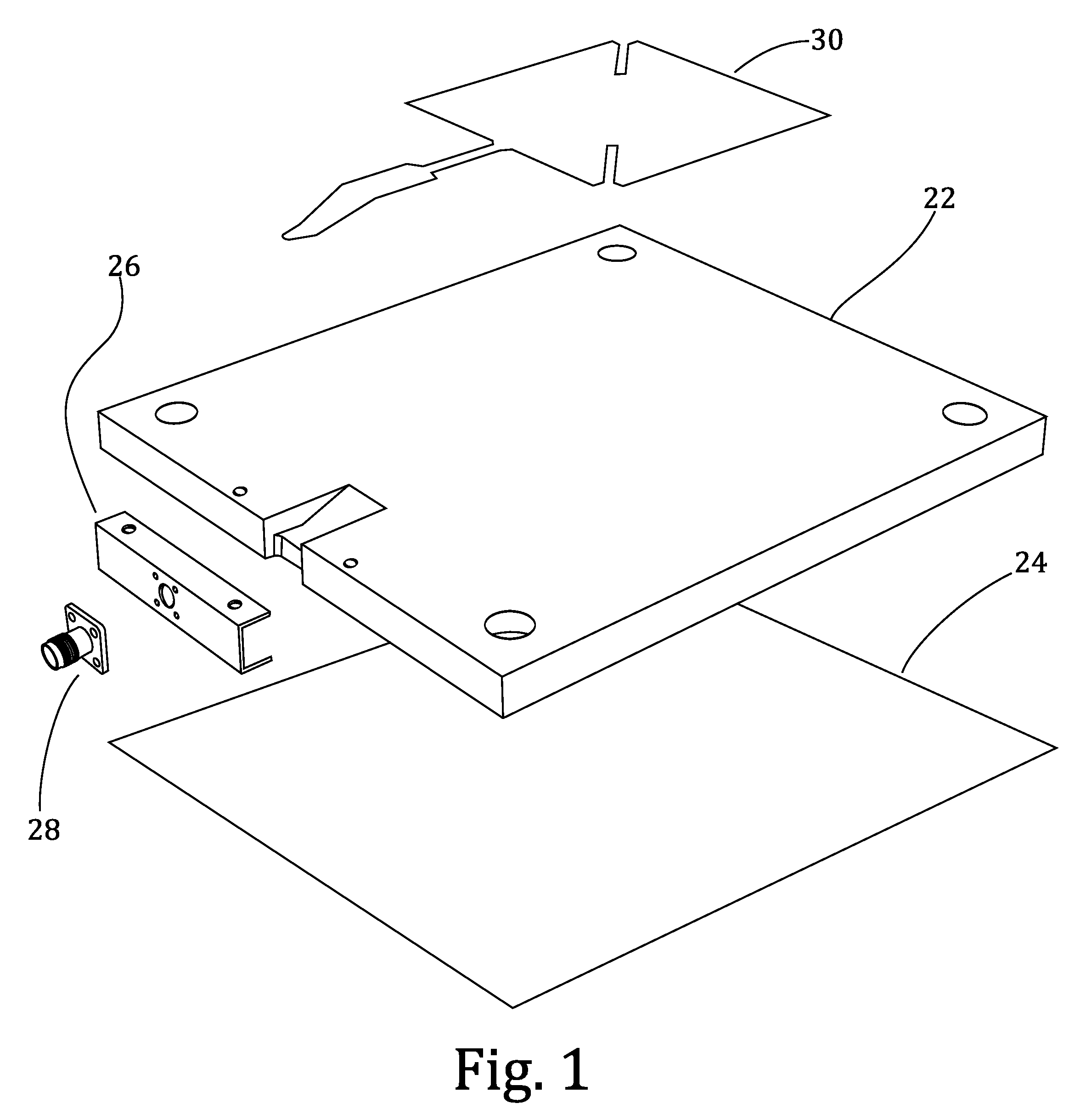RFID Microstip Interrogator Antenna System
a microstip and antenna technology, applied in the field of wireless communication, can solve the problems of mounting hardware that increases the cost of mounting, the cost of installation can be greatly over the cost of hardware, and the cost of rfid antennas can be expensiv
- Summary
- Abstract
- Description
- Claims
- Application Information
AI Technical Summary
Benefits of technology
Problems solved by technology
Method used
Image
Examples
Embodiment Construction
[0025]With reference to the figures, an RFID microstrip interrogator antenna system is herein described, the embodiment of the invention consists of the following elements: an base antenna (20), an optional enclosure (40), and an optional hanger kit (60). Referring to FIG. 1, the base antenna consists of: the pattern (30), dielectric substrate (22), ground plane (24), bracket (26), and RF connector (28). The enclosure consists of a folding carton (40). Referring to FIG. 8, the hanger kit comprises four units, each consisting of: a length of shock cord (64), hook (66), knot (68), and crimp (70). Each of these is described below.
Function
[0026]The current invention functions as a microstrip antenna. Signal originates externally and couples through a coaxial cable and coaxial cable connector, which mates to the RF connector (28). The signal ground couples to the bracket (26), which is coupled to the ground plane (24). The signal couples from the connector pin (29) to the transmission li...
PUM
 Login to View More
Login to View More Abstract
Description
Claims
Application Information
 Login to View More
Login to View More - R&D
- Intellectual Property
- Life Sciences
- Materials
- Tech Scout
- Unparalleled Data Quality
- Higher Quality Content
- 60% Fewer Hallucinations
Browse by: Latest US Patents, China's latest patents, Technical Efficacy Thesaurus, Application Domain, Technology Topic, Popular Technical Reports.
© 2025 PatSnap. All rights reserved.Legal|Privacy policy|Modern Slavery Act Transparency Statement|Sitemap|About US| Contact US: help@patsnap.com



